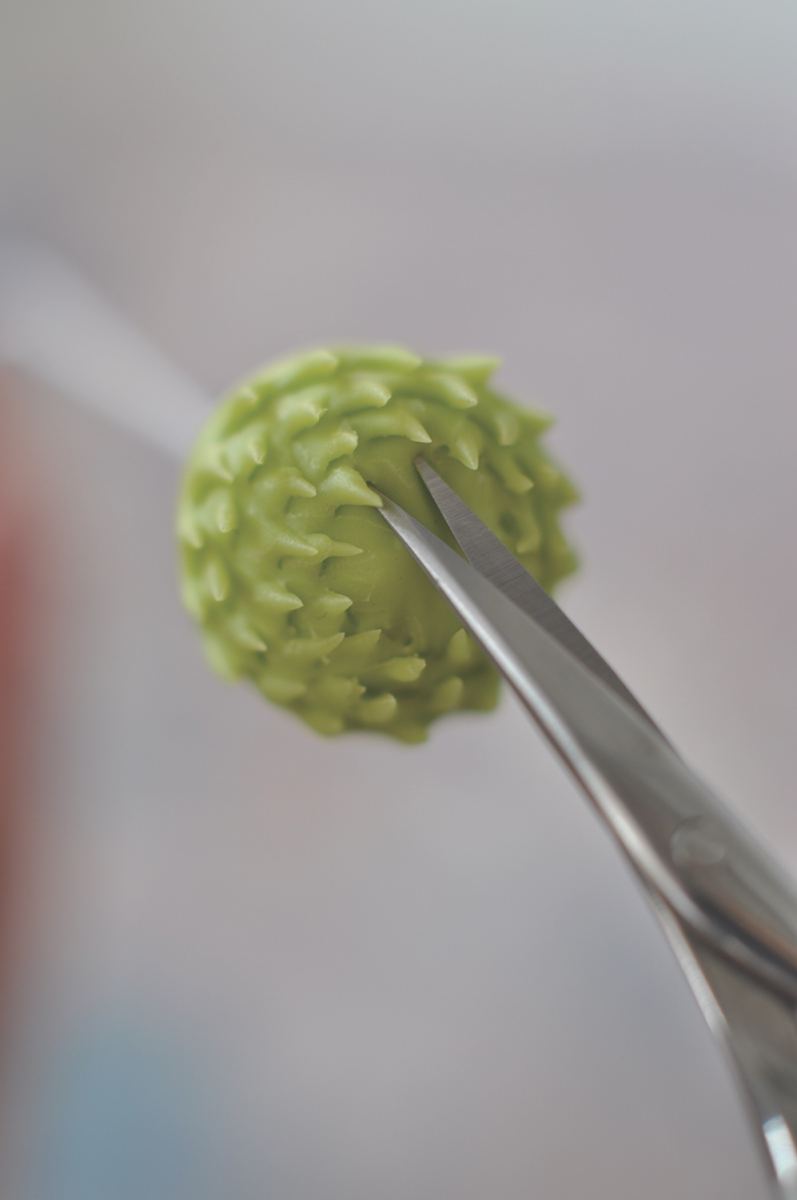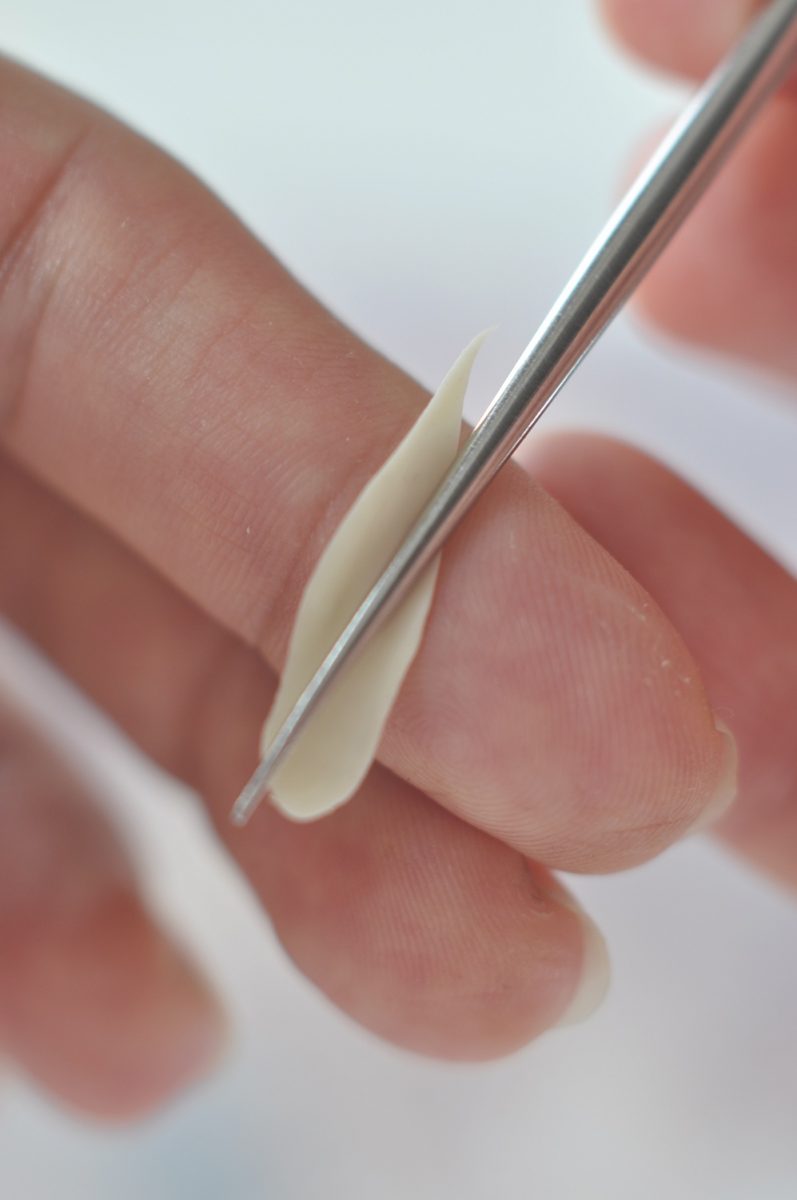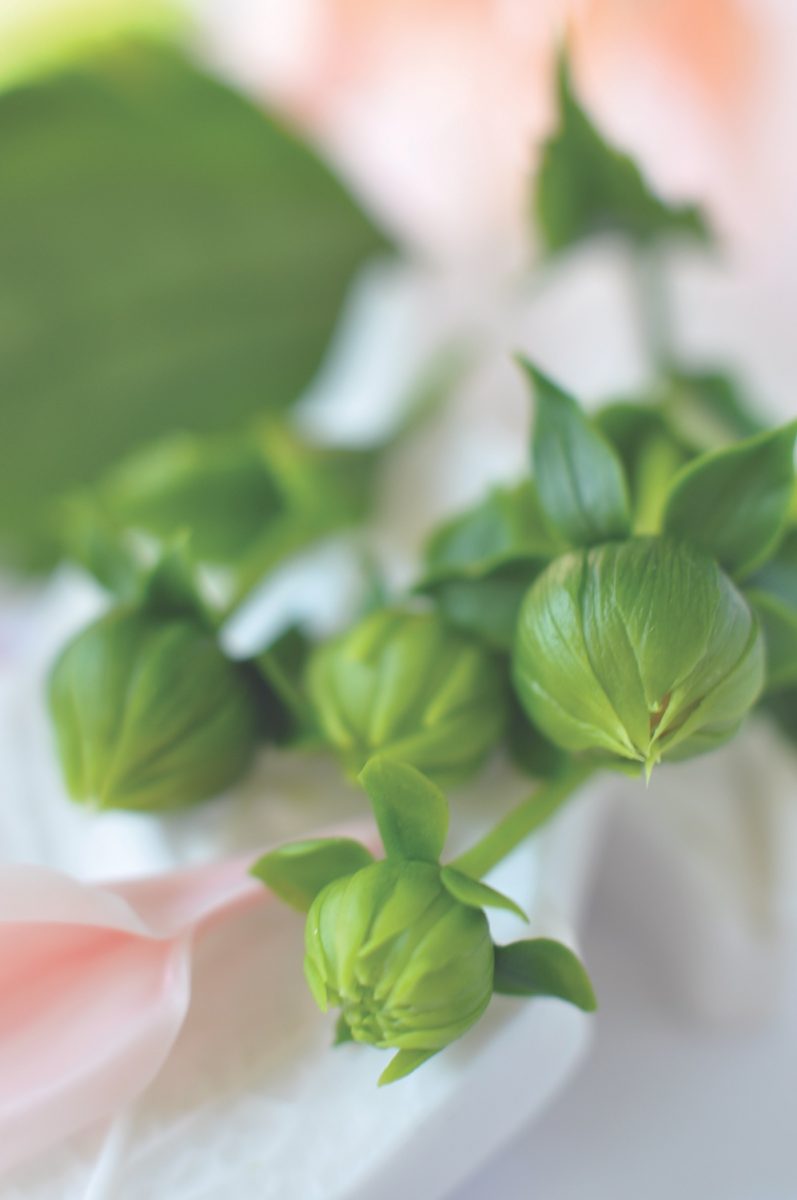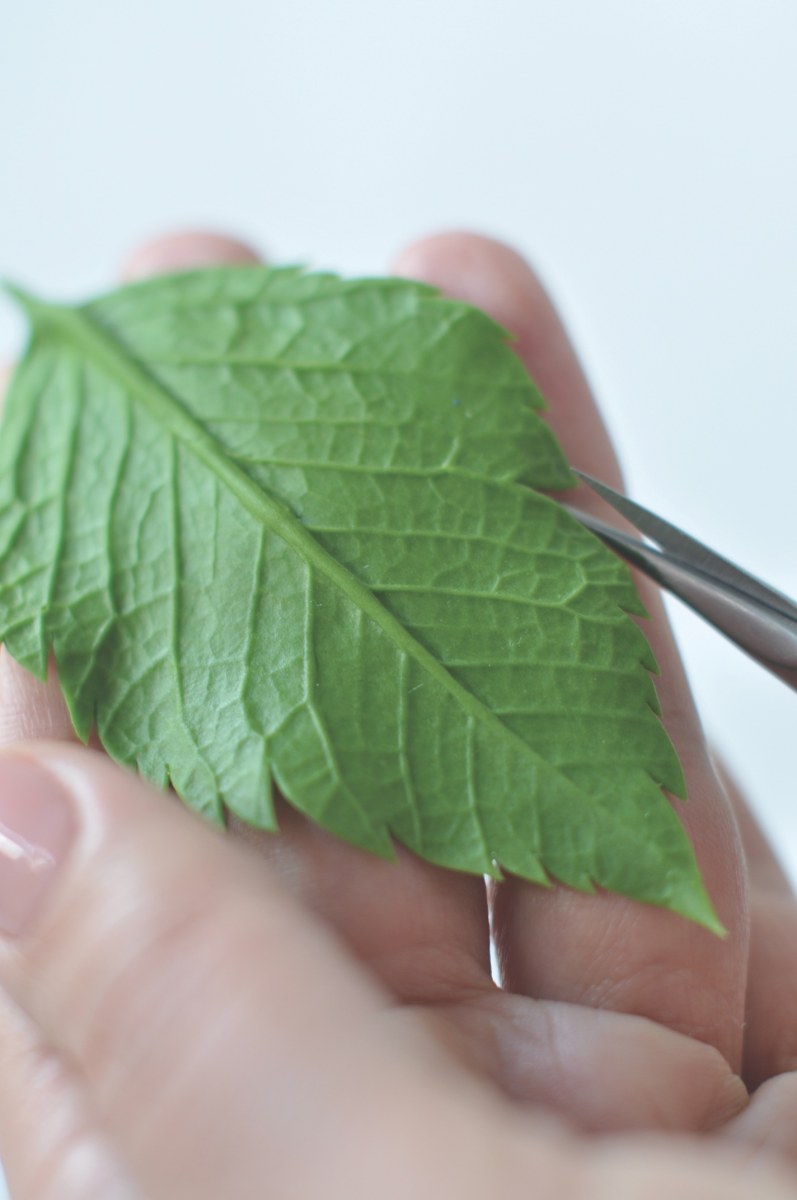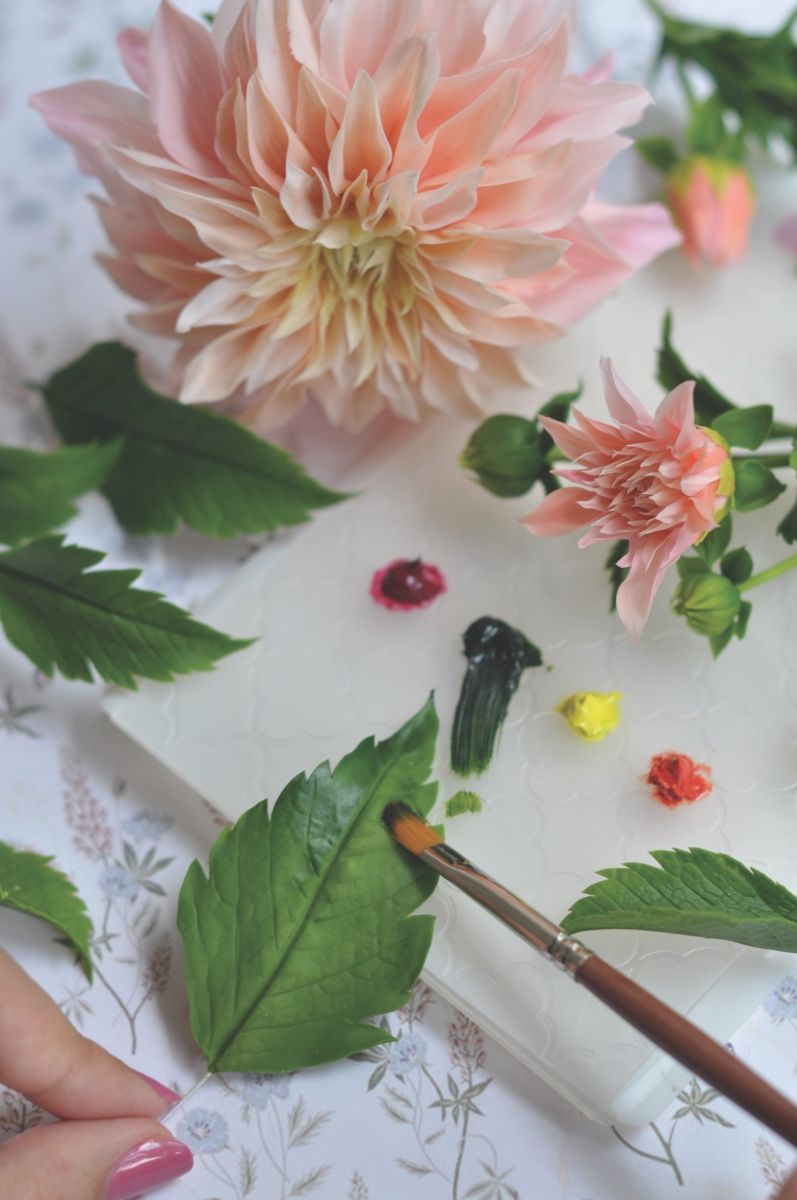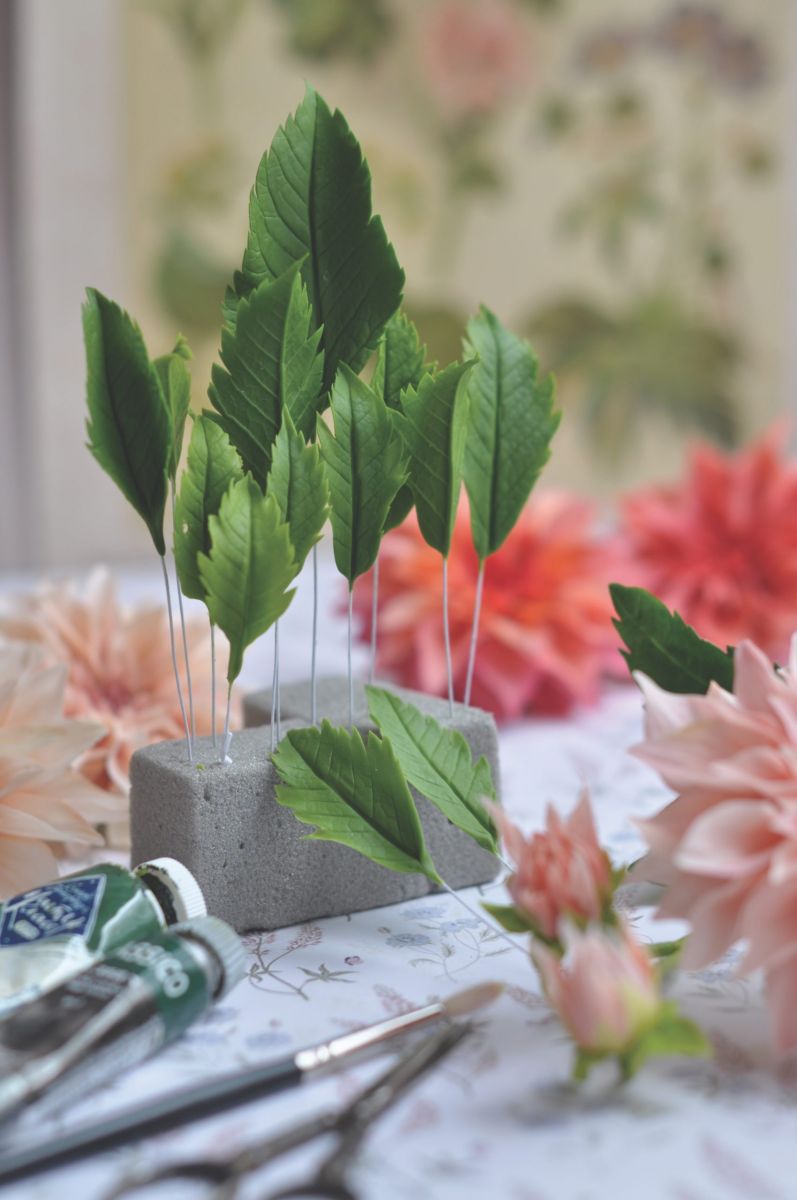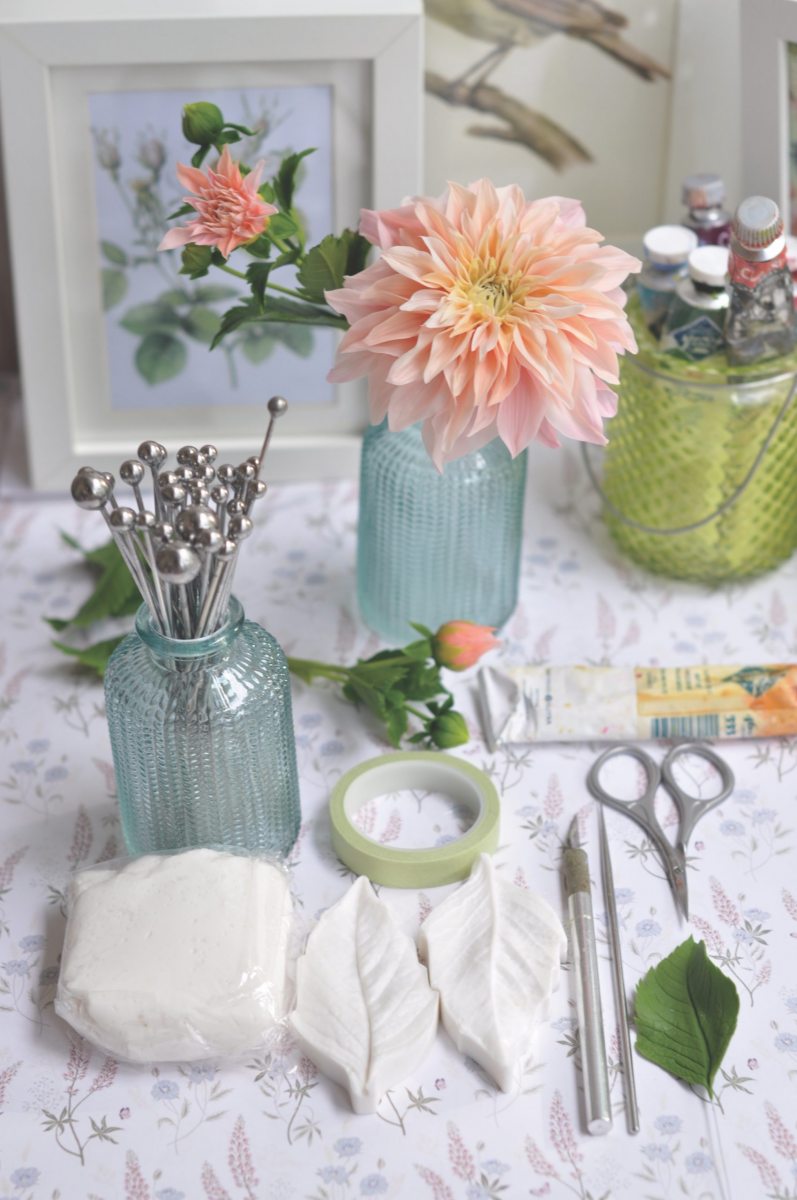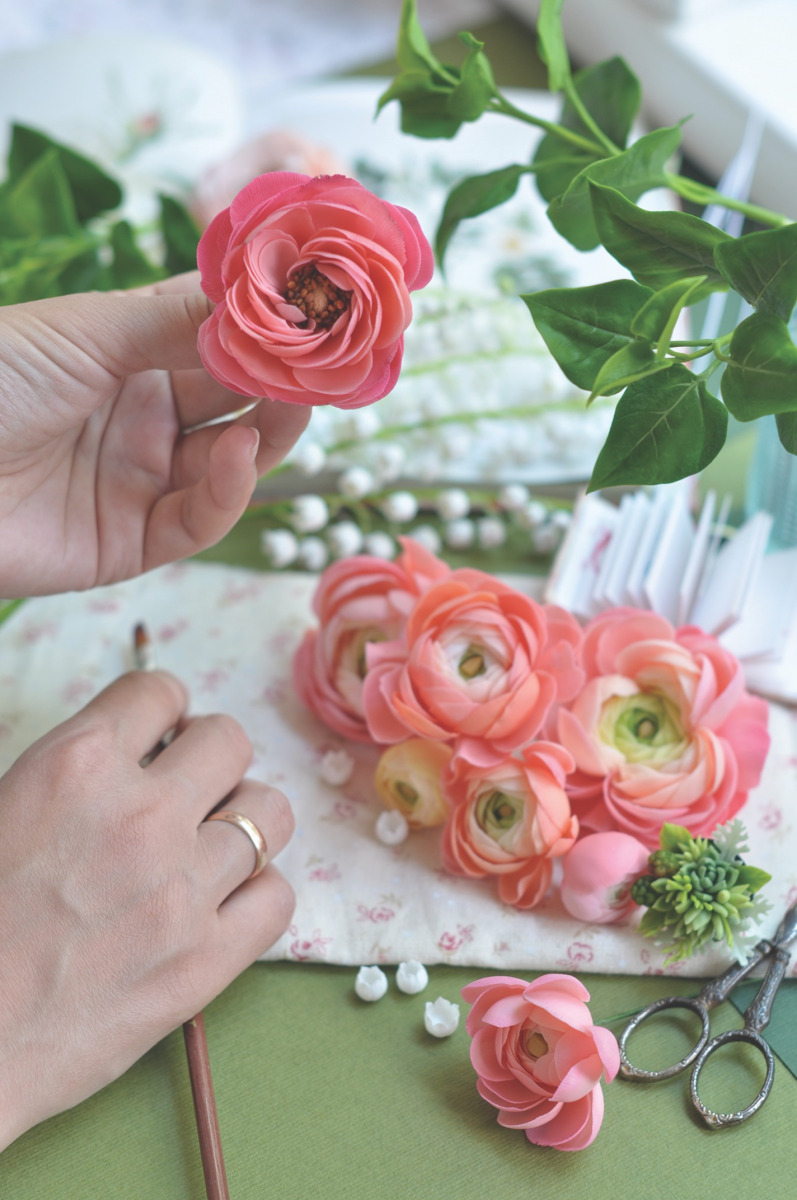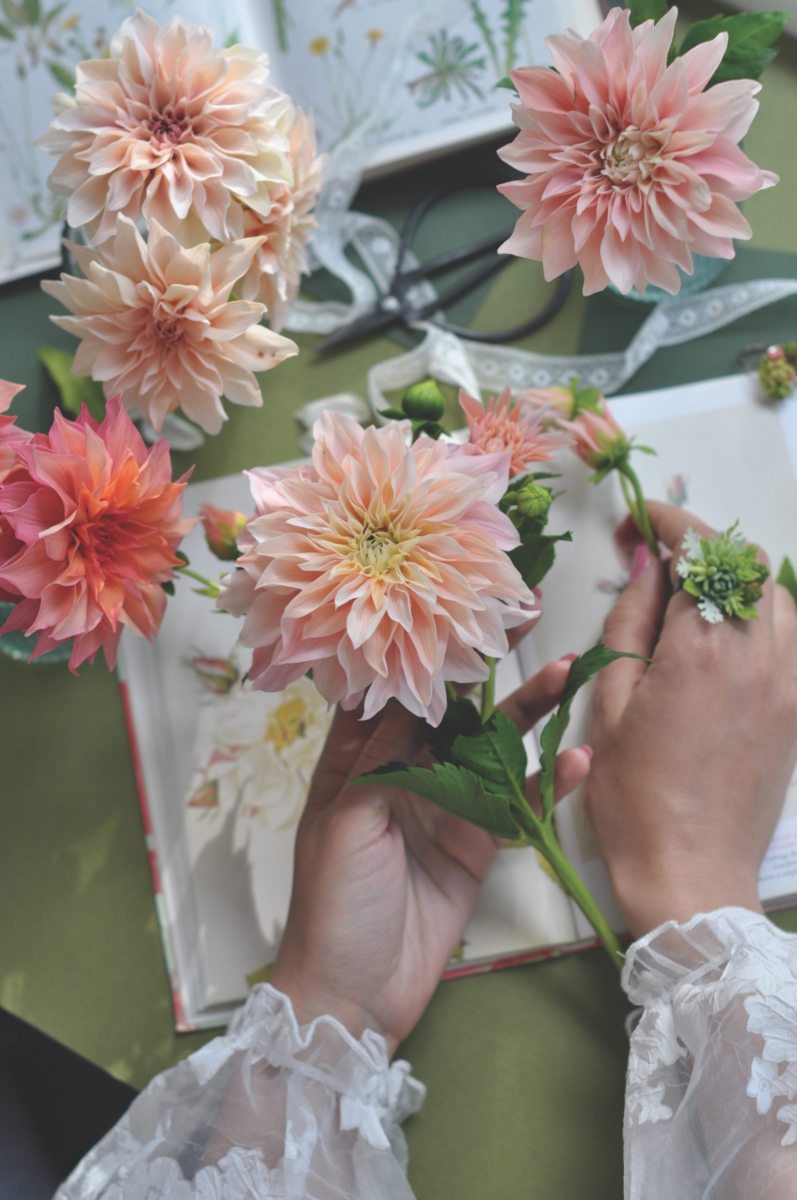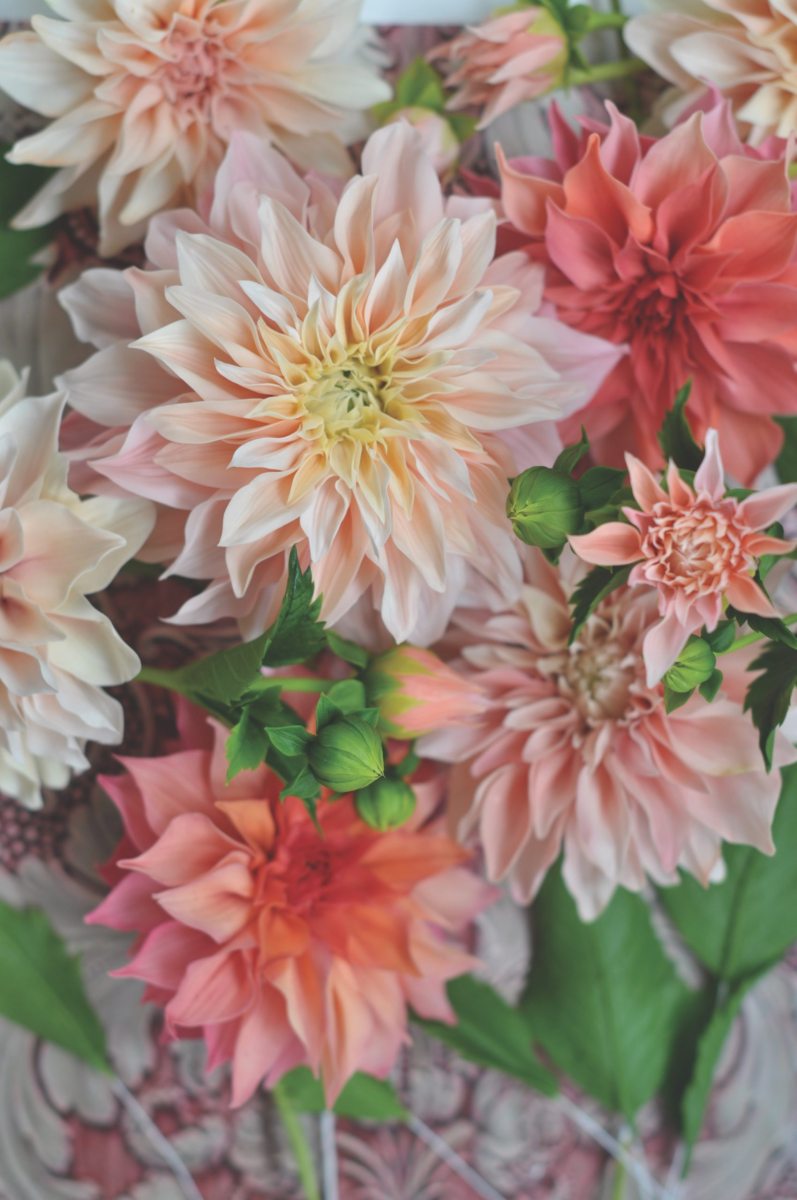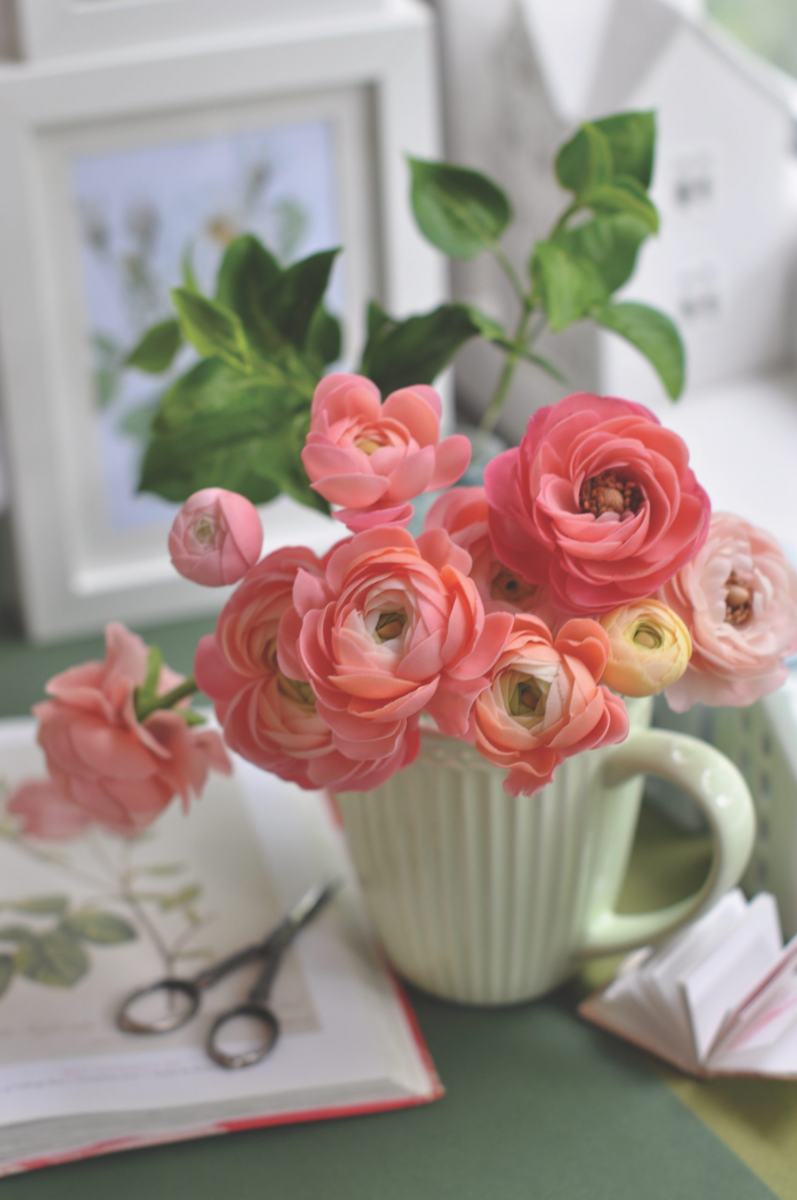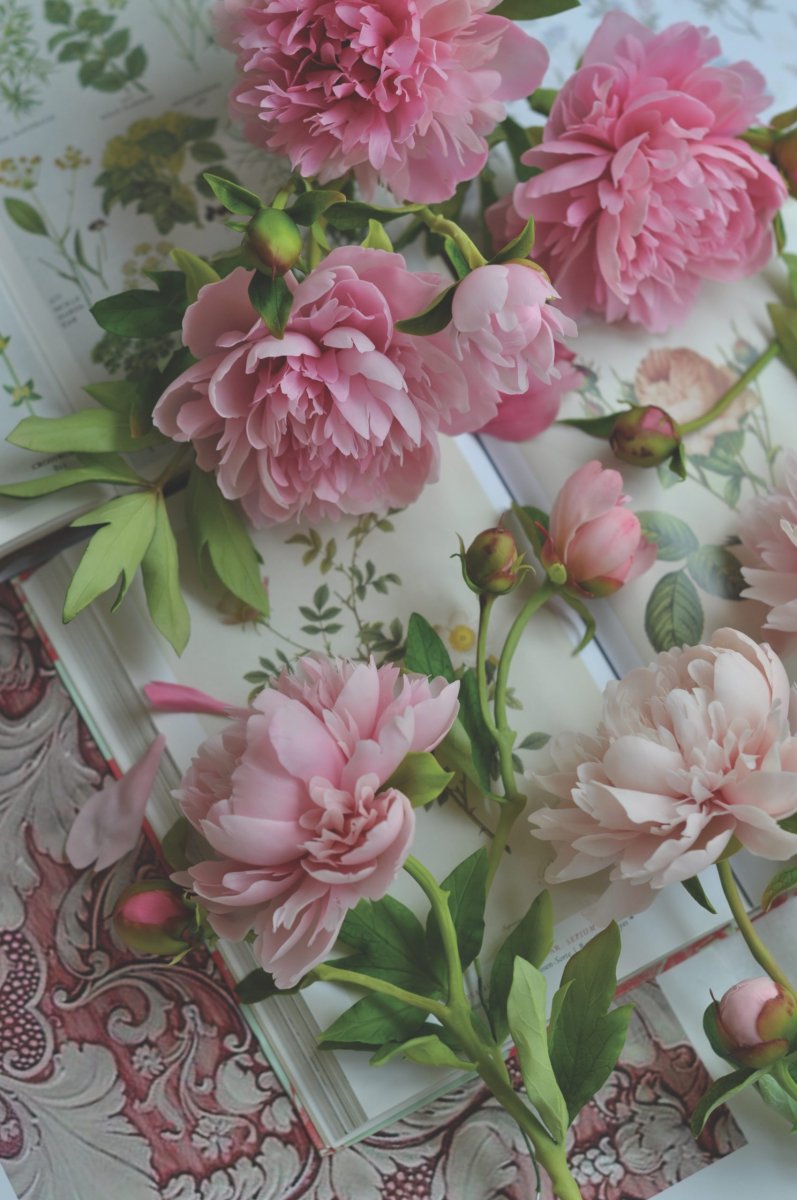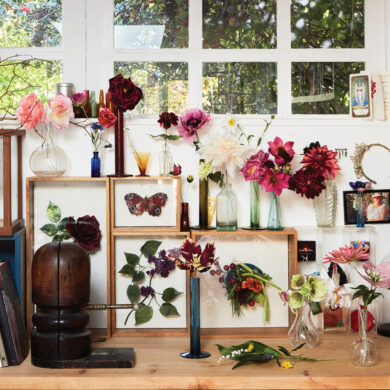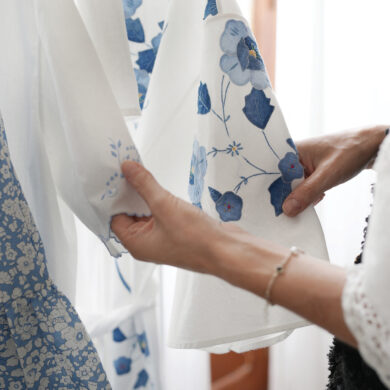The idea of unfading flowers became an inspiration for me. The path of my creativity began in 2012. Not having all the necessary tools, I began to invest time in my first flower. I added artistic oil paints to base clay and got different natural shades for my flowers.
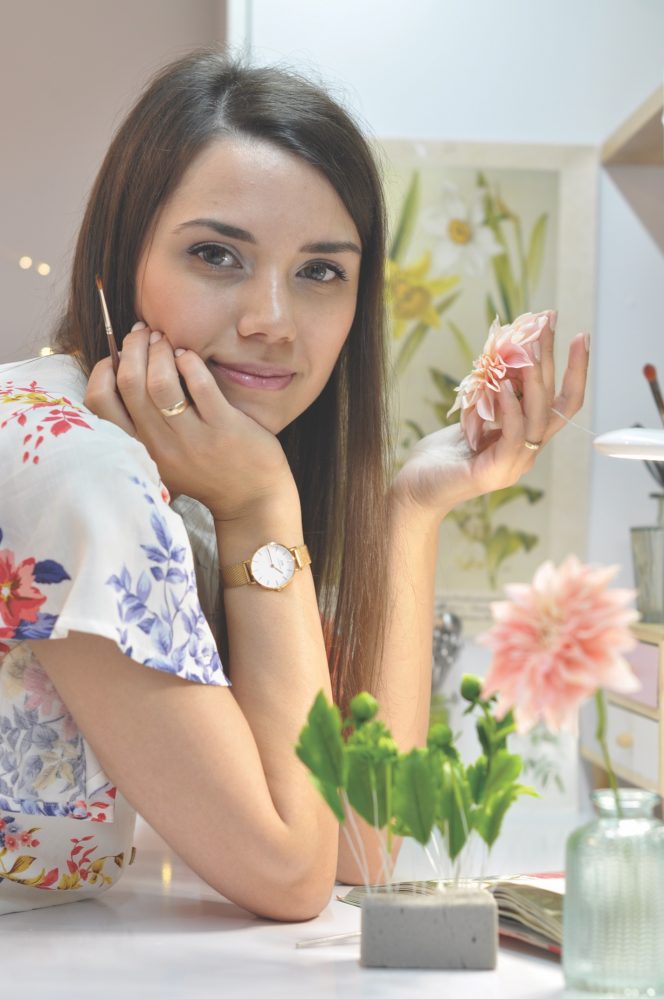
At the beginning of my journey, I did not have special tools and I had to make the necessary bend of the petals and leaves with the help of large beads. I am very grateful to my dad because he was able to make me instruments with balls of different diameters. For me, this is especially incredible. Now there is no such problem, since all the necessary tools for creativity are available for sale all over the world.
I bought a living flower and disassembled it completely, petal by petal, examined the stem and structure of the leaves. To repeat from clay what I see in a living flower is very exciting and at the same time quite difficult. In my opinion, the most important thing in ceramic floristry is patience and great desire.
I roll out all the stamens, petals and leaves on the palm of my hand with a special tool resembling a knitting needle. I begin to roll the petals and leaves of the flower from a shape that resembles a droplet. Having rolled out the clay to the desired shape, I put it in a mold with an individual texture of a flower and a leaf, and make an imprint. After the impression, I additionally tint each petal with oil paints to get a more saturated gradation of shades.
Every time I see a finished flower made by my own hands, I am overwhelmed with emotions and joy. I can work on one flower for several days or even weeks. It’s like meditation for me, and as I work, I don’t notice how several hours go by so quickly.
In my work, all of my art education which I have been developing since childhood, helped a great deal. On the one hand, creating these flowers was a new experience for me, and on the other hand, I was able to apply painting and sculpting techniques that I already understood. I loved the idea that all my skills in art converged.
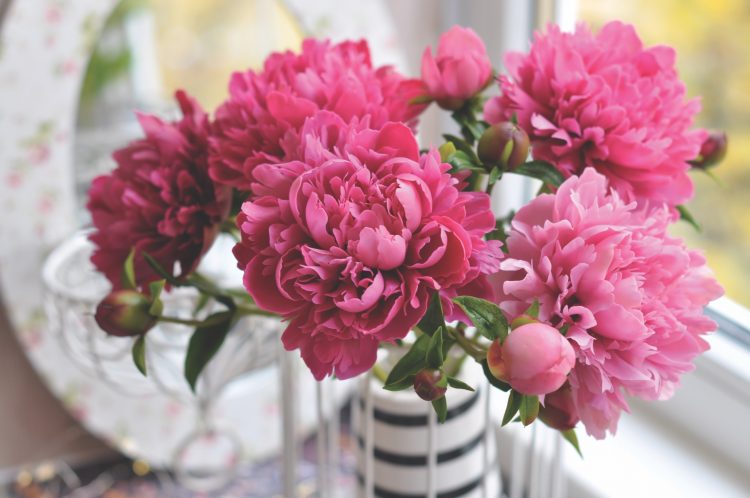
Day after day, I tried to get closer to the natural look of the flower. Because nature pleases us with such a variety, inspiration was everywhere. First there were ranunculus, forget-me-nots, and small roses, and then with experience, I moved on to more complex flowers such as peonies, roses, and dahlias.
Clay provides a unique composition that allows the flower to dry in a few hours without baking, preserving the pliability of the petals and keeping the desired shape. The main thing is to avoid getting water on the flower, so as not to spoil the shape.
Years passed and my interest in this craft only grew. I aimed to create flowers more professionally and move from handicraft to what can be called art. I created whole flower arrangements for customers to decorate their interiors.
In showing my work on the Internet, I received many letters with questions from women of different countries and cities about my technique of creating flowers. I thought it was great to share with other women what I love so much, because each individual puts something unique into a piece of clay with her own hands.
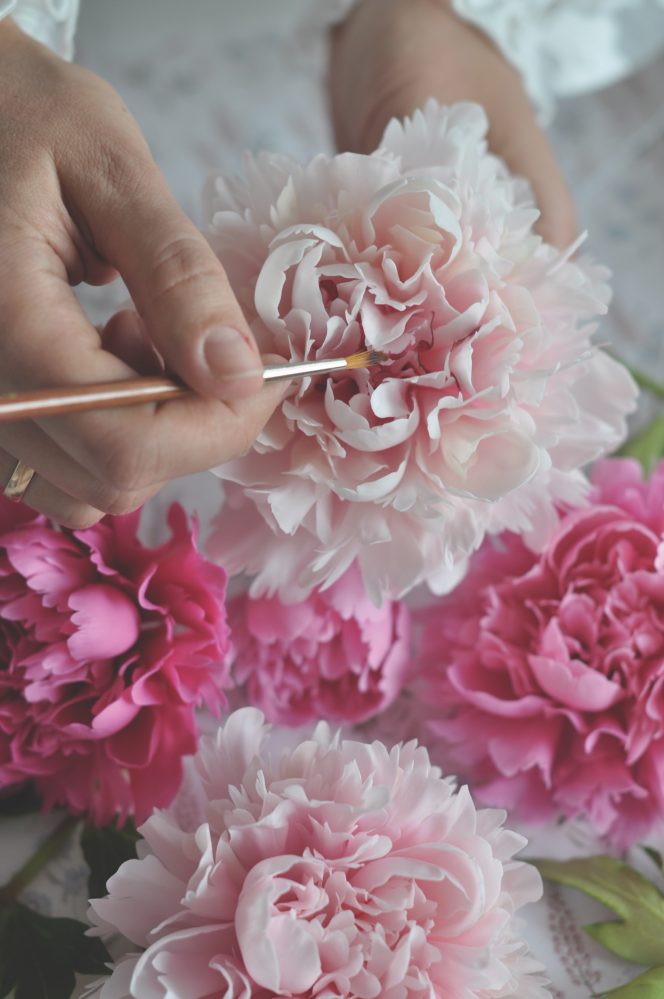
I spent a year teaching other women. Meanwhile, in 2017, my daughter was born. This was a new stage both in my role as a mother and in my work as an artist. Time became limited and I was overwhelmed, but this did not stop my desire to create. I tried to realize all of my creative endeavors, developing not only the technique of creating flowers, but also my passion for photography. I had these two favorite things that helped each other to develop.
With each flower creation, I tried to improve and bring the flower closer to realism. This is perhaps one of the most difficult tasks. Indeed, in nature, each flower is unique. For example, peonies still differ from each other, even if they have a common variety.
My workshop is now at my home, but I dream that one day it will be a welcoming space where I can work and share my knowledge with other women.
The idea of unfading flowers became an inspiration for me. The path of my creativity began in 2012. Not having all the necessary tools, I began to invest time in my first flower. I added artistic oil paints to base clay and got different natural shades for my flowers.

At the beginning of my journey, I did not have special tools and I had to make the necessary bend of the petals and leaves with the help of large beads. I am very grateful to my dad because he was able to make me instruments with balls of different diameters. For me, this is especially incredible. Now there is no such problem, since all the necessary tools for creativity are available for sale all over the world.
I bought a living flower and disassembled it completely, petal by petal, examined the stem and structure of the leaves. To repeat from clay what I see in a living flower is very exciting and at the same time quite difficult. In my opinion, the most important thing in ceramic floristry is patience and great desire.
I roll out all the stamens, petals and leaves on the palm of my hand with a special tool resembling a knitting needle. I begin to roll the petals and leaves of the flower from a shape that resembles a droplet. Having rolled out the clay to the desired shape, I put it in a mold with an individual texture of a flower and a leaf, and make an imprint. After the impression, I additionally tint each petal with oil paints to get a more saturated gradation of shades.
Every time I see a finished flower made by my own hands, I am overwhelmed with emotions and joy. I can work on one flower for several days or even weeks. It’s like meditation for me, and as I work, I don’t notice how several hours go by so quickly.
In my work, all of my art education which I have been developing since childhood, helped a great deal. On the one hand, creating these flowers was a new experience for me, and on the other hand, I was able to apply painting and sculpting techniques that I already understood. I loved the idea that all my skills in art converged.

Day after day, I tried to get closer to the natural look of the flower. Because nature pleases us with such a variety, inspiration was everywhere. First there were ranunculus, forget-me-nots, and small roses, and then with experience, I moved on to more complex flowers such as peonies, roses, and dahlias.
Clay provides a unique composition that allows the flower to dry in a few hours without baking, preserving the pliability of the petals and keeping the desired shape. The main thing is to avoid getting water on the flower, so as not to spoil the shape.
Years passed and my interest in this craft only grew. I aimed to create flowers more professionally and move from handicraft to what can be called art. I created whole flower arrangements for customers to decorate their interiors.
In showing my work on the Internet, I received many letters with questions from women of different countries and cities about my technique of creating flowers. I thought it was great to share with other women what I love so much, because each individual puts something unique into a piece of clay with her own hands.

I spent a year teaching other women. Meanwhile, in 2017, my daughter was born. This was a new stage both in my role as a mother and in my work as an artist. Time became limited and I was overwhelmed, but this did not stop my desire to create. I tried to realize all of my creative endeavors, developing not only the technique of creating flowers, but also my passion for photography. I had these two favorite things that helped each other to develop.
With each flower creation, I tried to improve and bring the flower closer to realism. This is perhaps one of the most difficult tasks. Indeed, in nature, each flower is unique. For example, peonies still differ from each other, even if they have a common variety.
My workshop is now at my home, but I dream that one day it will be a welcoming space where I can work and share my knowledge with other women.




